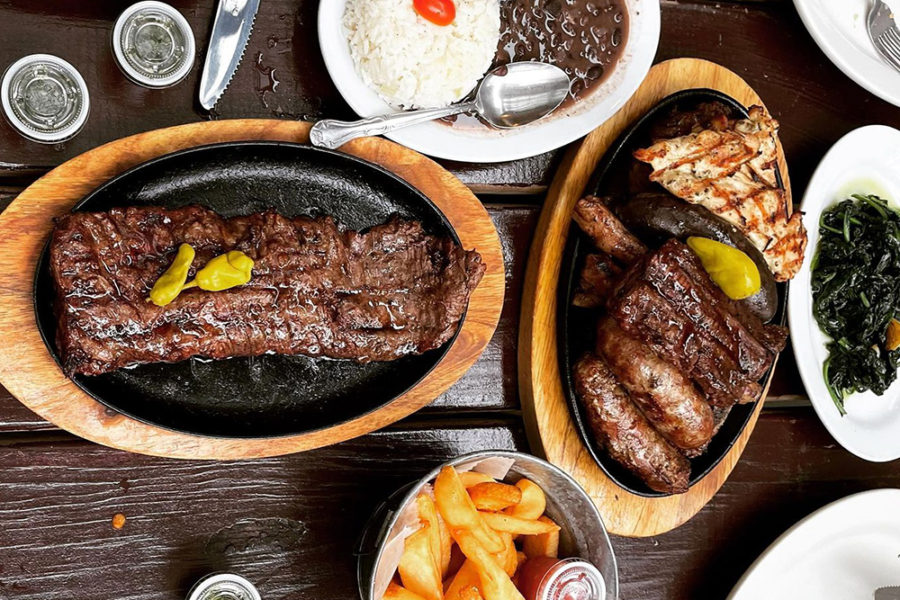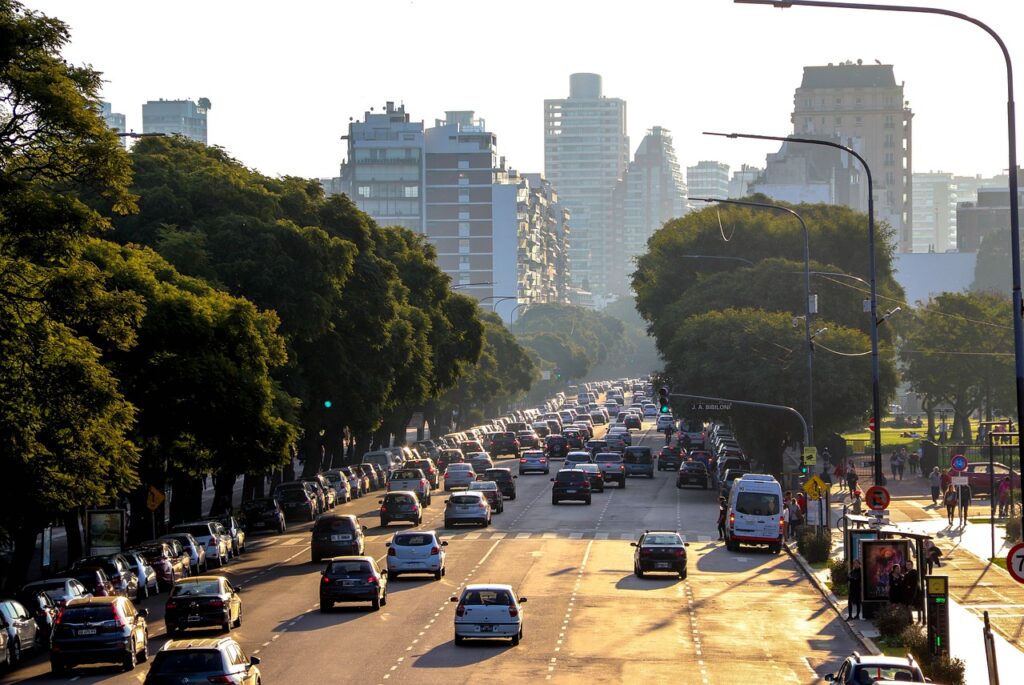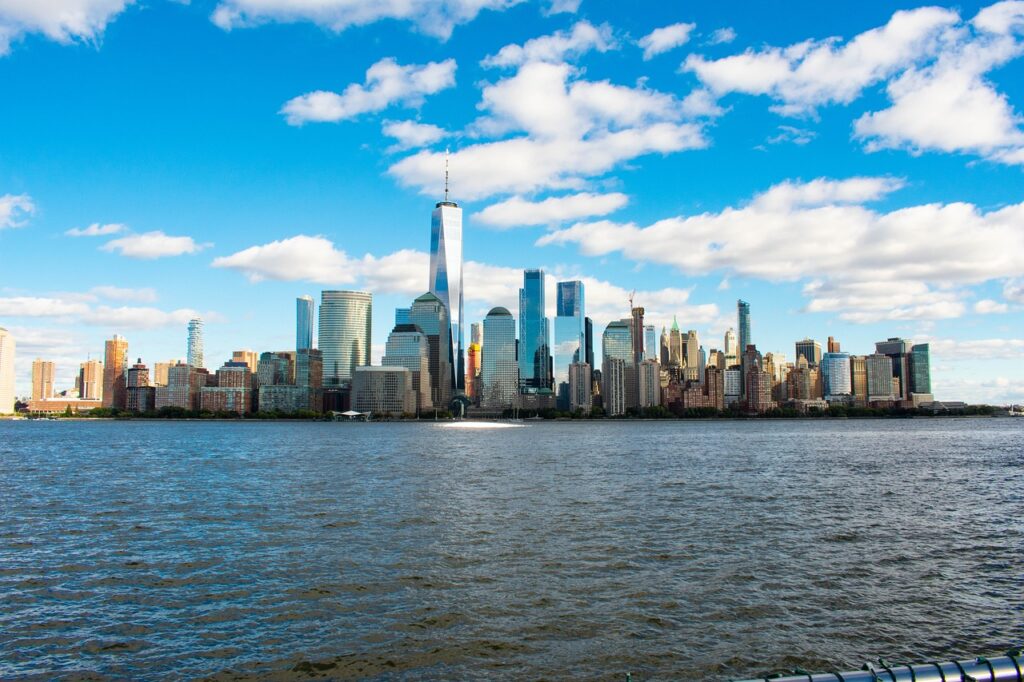I. Buenos Aires
Buenos Aires, the vibrant capital of Argentina, is situated on the eastern shore of the Rio de la Plata estuary, along the southeastern coast of South America. The city is nestled on the vast Argentine Pampas, a fertile plain that extends to the west, providing an ideal location for agriculture. Its proximity to the Rio de la Plata, one of the widest estuaries in the world, has played a crucial role in shaping its economic and cultural significance.
Buenos Aires boasts a rich and diverse history that dates back to its founding in 1536 by Spanish explorer Pedro de Mendoza. However, it was Juan de Garay, another Spanish explorer, who officially established the city in 1580. Over the centuries, Buenos Aires witnessed periods of colonial rule, struggles for independence, and waves of immigration that contributed to its cosmopolitan character.
The city’s history is marked by significant events, including the May Revolution of 1810, which led to Argentina’s independence from Spanish rule. Buenos Aires has been a focal point for political, economic, and cultural developments in Argentina, evolving into a dynamic metropolis that reflects the country’s complex history.
Buenos Aires serves as the capital and largest city of Argentina. As the political, economic, and cultural heart of the nation, it plays a central role in shaping Argentina’s identity. The city is a melting pot of influences, blending European, indigenous, and immigrant cultures to create a unique and vibrant atmosphere.
With its iconic neighborhoods, historic landmarks, and a thriving arts scene, Buenos Aires stands as a symbol of Argentina’s resilience and creativity. From the grandeur of its architecture to the passion of tango music and dance, the city captivates visitors with its diverse offerings and serves as a gateway to the rich tapestry of Argentine culture.
II. Must-See Attractions

A. Plaza de Mayo
Plaza de Mayo, the historic heart of Buenos Aires, is a symbol of the city’s political and social history. Bordered by iconic buildings such as the Casa Rosada (Pink House), the Metropolitan Cathedral, and the Cabildo, the square has been the stage for numerous significant events, including protests and celebrations. The Madres de Plaza de Mayo, a group advocating for human rights, often gathers here, adding to the square’s historical importance.
B. La Boca Neighborhood
La Boca is a vibrant and colorful neighborhood known for its distinct architecture and rich cultural heritage. Caminito, a pedestrian street, is adorned with brightly painted buildings, street art, and tango performances. The neighborhood is also home to the famous La Bombonera stadium, the iconic home of Boca Juniors, one of Argentina’s most renowned football clubs.
C. Recoleta Cemetery
Recoleta Cemetery is an architectural masterpiece and the final resting place for many prominent Argentinians, including Eva Perón. The cemetery is renowned for its elaborate mausoleums, sculptures, and the atmosphere of quiet reflection. A stroll through its labyrinthine pathways provides insight into the country’s history and the lives of its influential figures.
D. Teatro Colon
Teatro Colon stands as one of the world’s grand opera houses, renowned for its exceptional acoustics and opulent architecture. A guided tour reveals the intricacies of its design and history, showcasing its significance as a cultural institution. Attend a performance to experience the magic of this iconic venue.
E. Palermo Soho
Palermo Soho is a trendy and artistic neighborhood known for its boutique shops, vibrant street art, and eclectic atmosphere. This bohemian district is a hub for fashion, design, and gastronomy. Stroll through its charming streets, explore unique boutiques, and indulge in the diverse culinary scene that defines Palermo Soho’s appeal.
III. Rich Culture and Arts

A. Tango and Dance Culture
Tango, born in the working-class neighborhoods of Buenos Aires, is an integral part of the city’s identity. Experience the passion and rhythm of this dance at local milongas or through captivating performances in theaters. Tango not only represents a dance form but also embodies the soul and history of Buenos Aires.
B. Argentine Cuisine
Delve into the rich tapestry of Argentine cuisine, which is renowned for its beef-centric dishes. From the iconic asado (barbecue) to empanadas and chimichurri sauce, savor the flavors that reflect the country’s cultural heritage. Explore traditional parrillas (steakhouses), local markets, and eateries to experience the diverse and delicious world of Argentine gastronomy.
C. Museums and Art Galleries
Buenos Aires boasts a vibrant cultural scene with numerous museums and art galleries. Visit the Museo Nacional de Bellas Artes for a comprehensive art collection, explore the modern exhibits at the MALBA (Latin American Art Museum of Buenos Aires), and immerse yourself in the city’s artistic narrative through its diverse cultural institutions.
IV. Outdoor Activities
A. Parks and Green Spaces
Escape the urban bustle by exploring Buenos Aires’ parks and green spaces. The Bosques de Palermo (Palermo Woods) offers a tranquil retreat with lakes and botanical gardens, while Parque Tres de Febrero is ideal for cycling or leisurely strolls. These green oases provide a refreshing contrast to the city’s lively streets.
B. River Plate Waterfront
Enjoy the beauty of the River Plate waterfront, where you can take scenic walks, cycle along the paths, or simply relax by the water. The waterfront is dotted with parks, restaurants, and recreational areas, providing a picturesque setting for outdoor activities and a view of the iconic Puente de la Mujer.
C. Ecotourism Options
For those seeking a deeper connection with nature, Buenos Aires offers ecotourism options. Explore the Reserva Ecológica Costanera Sur, an urban nature reserve, or venture to the nearby Delta del Paraná for a boat tour through its intricate waterways, showcasing the region’s biodiversity.
V. Buenos Aires’ Neighborhoods

A. San Telmo
San Telmo exudes historic charm with its cobblestone streets, antique shops, and tango culture. Visit the vibrant San Telmo Market, where artisans and vendors showcase their crafts, and explore the neighborhood’s unique art galleries and street performances.
B. Recoleta
Recoleta is synonymous with elegance and sophistication. Stroll through the renowned Recoleta Cemetery, visit cultural centers like the Centro Cultural Recoleta, and enjoy the upscale boutiques and cafes that define this upscale neighborhood.
C. Palermo
Palermo, divided into several sub-districts, is a multifaceted area offering something for everyone. Palermo Hollywood is known for its nightlife and gastronomy, Palermo Soho is a hub for shopping and arts, and Palermo Parks provide lush greenery and recreational spaces.
D. Puerto Madero
Puerto Madero, the revitalized waterfront district, combines modernity with history. Explore its contemporary architecture, dine in upscale restaurants housed in renovated warehouses, and take a stroll along the Puente de la Mujer, an iconic pedestrian bridge.
VI. Shopping and Dining

A. Local Markets and Shops
Immerse yourself in the local shopping scene by exploring local markets and shops. Feria de Mataderos offers traditional crafts and folkloric performances, while Feria de San Telmo is a bustling market where you can find unique antiques and handmade goods.
B. Traditional Argentine Restaurants
Savor the authenticity of traditional Argentine restaurants, known as parrillas. La Cabrera and Don Julio are iconic parrillas in Palermo, offering mouthwatering steaks and a classic Argentine dining experience.
C. Street Food and Local Dishes
Experience the city’s culinary delights through street food and local dishes. Try choripán, a chorizo sandwich, or grab a slice of pizza at the historic Güerrín pizzeria. For a sweet treat, indulge in alfajores, a popular Argentine confection. Buenos Aires’ diverse culinary scene ensures a delightful gastronomic adventure.
VII. Safety Tips and Travel Advice

A. Staying Safe in Buenos Aires
- Neighborhood Awareness: Be aware of your surroundings, especially in crowded or unfamiliar areas. While Buenos Aires is generally safe, exercise caution in tourist hotspots and be vigilant against petty crimes.
- Public Transportation Caution: Keep an eye on your belongings when using public transportation, and avoid displaying valuable items openly. Use reputable taxi services or rideshare apps for secure and convenient travel.
- Emergency Numbers: Save local emergency numbers, including those for police and medical assistance, in case of any unforeseen circumstances.
B. Currency and Language
- Argentine Peso: Familiarize yourself with the Argentine Peso (ARS) and be aware of the current exchange rates. Currency exchange offices and ATMs are widely available.
- Language: Spanish is the official language. While many locals understand basic English, learning a few common Spanish phrases can enhance your communication and overall experience.
C. Local Customs and Etiquette
- Greeting Customs: Embrace the local greeting customs, such as a kiss on the cheek, when meeting people. It’s a common and friendly practice in Argentina.
- Tipping Etiquette: Tipping is customary in restaurants and for services. A standard tip is around 10-15% of the total bill. Check for a service charge, as it may be included.
VIII. Planning Your Trip

A. Best Times to Visit
- Spring and Fall: Plan your visit during spring (September to November) or fall (March to May) for pleasant weather and fewer crowds.
- Festivals and Events: Consider attending festivals like the Buenos Aires International Jazz Festival in November or the Tango Buenos Aires Festival in August for a unique cultural experience.
B. Accommodation Options
- Boutique Hotels: Explore boutique hotels in neighborhoods like Palermo for a personalized and stylish stay.
- Budget-Friendly Hostels: Buenos Aires offers budget-friendly hostels, especially in areas like San Telmo, providing affordable accommodation options for travelers.
C. Transportation Within the City
- Subte (Subway) and Buses: Utilize the Subte and buses for cost-effective and efficient transportation within the city. Purchase a SUBE card for easy access to public transportation.
- Taxis and Rideshare: Taxis and rideshare services are readily available. Stick to official services to ensure safety and fair pricing.
D. Budget Considerations
- Free Attractions: Take advantage of free attractions such as parks, markets, and street performances to enhance your experience without exceeding your budget.
- Dining Economically: Explore local markets and street food for affordable and authentic dining experiences. Look for “menu del día” options at restaurants for budget-friendly meals.
IX. The City’s Attractions and Cultural Heritage
In concluding your exploration of Buenos Aires, it’s evident that the city’s allure lies in its rich cultural tapestry, vibrant neighborhoods, and iconic attractions. The passionate rhythms of tango echo through its streets, and the savory delights of Argentine cuisine serve as a gateway to the country’s culinary heritage. From the historic Plaza de Mayo to the eclectic charm of Palermo, Buenos Aires is a celebration of history, art, and diverse traditions.
To prospective travelers, Buenos Aires beckons with its dynamic atmosphere and warm, welcoming locals. Explore the city’s diverse neighborhoods, each with its own character and story to tell. Immerse yourself in the passion of tango, savor the flavors of traditional parrillas, and wander through the historic streets that bear witness to the city’s evolution.
Embrace Buenos Aires not just as a destination but as an experience—an exploration of culture, a dance with history, and a feast for the senses. Whether it’s the grandeur of Teatro Colon or the artistic flair of Palermo Soho, the city invites you to discover its secrets and forge your own memorable journey. Buenos Aires is not merely a place on the map; it’s a living, breathing expression of Argentina’s soul.
So, fellow travelers, as you plan your adventure to Buenos Aires, let curiosity be your guide, and may the vibrant spirit of this captivating city leave an indelible mark on your heart. Buenos Aires awaits, ready to share its stories and embrace those who seek to unravel its mysteries. ¡Bienvenidos a Buenos Aires! (Welcome to Buenos Aires!)
X. Additional Resources
A. Useful Websites and Further Reading
- Buenos Aires Tourism Official Website: Access official information on attractions, events, and travel tips from the city’s tourism board.
- Time Out Buenos Aires: Stay updated on the latest events, dining recommendations, and cultural happenings in Buenos Aires.
- Lonely Planet – Buenos Aires: Explore in-depth travel guides and tips from Lonely Planet to plan your visit to Buenos Aires.
- The Bubble: Gain insights into Argentine culture, news, and lifestyle through this English-language publication based in Buenos Aires.
- BA Expats: Connect with the expat community and find valuable insights, advice, and recommendations for living or traveling in Buenos Aires.
B. Travel Agencies and Tour Operators
- Say Hueque – Tours in Argentina and Chile: Specializing in South American travel, Say Hueque offers a range of tours and experiences, including those in Buenos Aires.
- Argentina Travel Partners: This agency provides personalized travel experiences, including tours, accommodations, and transportation services.
- Journeyou: Explore customizable travel packages and guided tours, ensuring a tailored experience for your visit to Buenos Aires.
- South America Travel: Plan your South American adventure with this agency, which offers comprehensive travel packages and expert guidance.
When planning your trip to Buenos Aires, these resources can offer valuable insights, recommendations, and assistance, ensuring a well-informed and enjoyable experience in this vibrant city.



